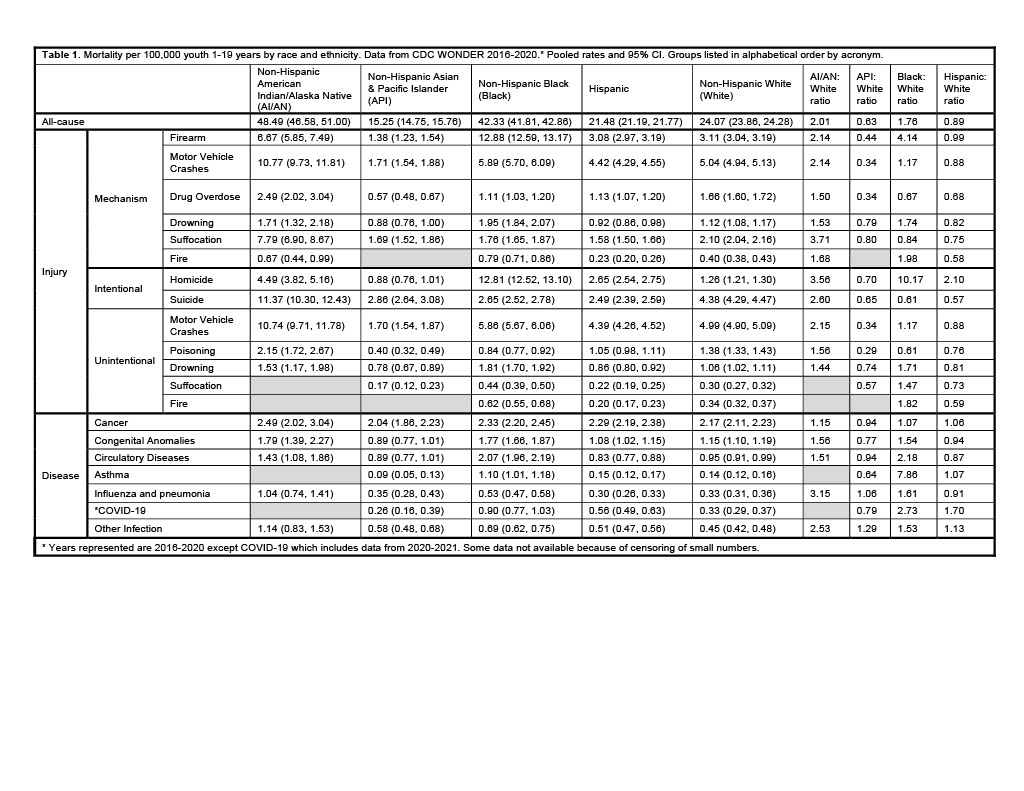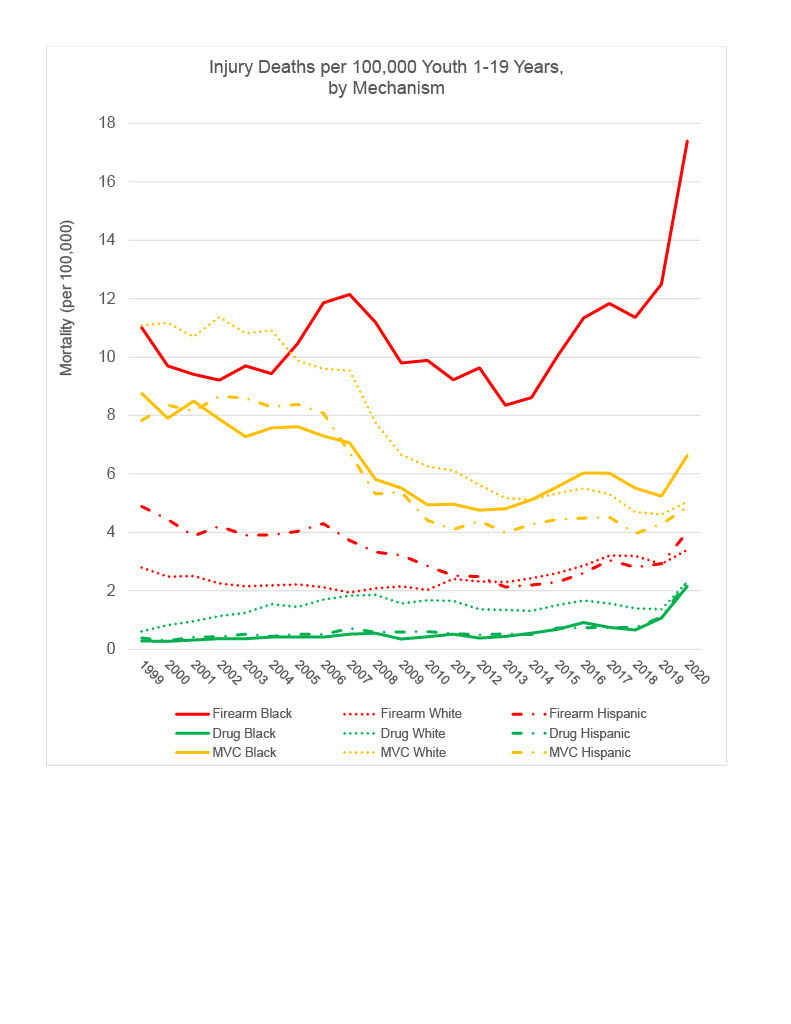Public Health & Prevention
Session: Public Health & Prevention 3
236 - Racial-Ethnic Disparities in All-Cause and Cause-Specific Mortality among Youth Ages 1-19 in the United States
Saturday, May 4, 2024
3:30 PM - 6:00 PM ET
Poster Number: 236
Publication Number: 236.1638
Publication Number: 236.1638

Elizabeth Wolf, MD, MPH (she/her/hers)
Associate Professor
Virginia Commonwealth University School of Medicine
Richmond, Virginia, United States
Presenting Author(s)
Background: It is not well understood how disparities have contributed to recent increases in all-cause and cause-specific mortality rates. A comprehensive analysis of disparities for the leading causes of pediatric death is lacking.
Objective: To compare all-cause and cause-specific mortality rates of youth from different racial and ethnic backgrounds.
Design/Methods: Using the Population-based, Centers for Disease Control and Prevention Wide-Ranging Online Data for Epidemiologic Research (WONDER) database, we conducted a temporal analysis of youth aged 1-19 years from 1999 to 2020 and comparison of aggregate rates during 2016-2020. Outcomes were pooled, all-cause, and cause-specific mortality rates per 100,000 population for leading causes of death. Injuries were classified by mechanism and intent. Data were disaggregated across five groups: Hispanic ethnicity and non-Hispanic American Indian/Alaska Native (AI/AN), non-Hispanic Asian Pacific Islander (API), non-Hispanic Black (Black), and non-Hispanic White (White) races.
Results: Between 1999 and 2020, the gap in mortality between White youth and those of Black and AI/AN youth increased. Disparities were observed for almost all leading causes of injury and disease. By mechanism, the leading killer of Black youth was firearms, whereas motor vehicle crashes (MVCs) were the leading killer of AI/AN, Hispanic and White youth. API youth were most likely to die by MVC and suffocation. By intent, Black youth were most likely to die from homicide, API youth were most likely to die from suicide, and Hispanic and White youth were most likely to die from unintentional MVCs. AI/AN youth were most likely to die from suicide and unintentional MVCs. For injuries, the largest Black:White ratios occurred in homicide (10.17) and firearm injury (4.14) while the largest AI/AN:White ratios occurred in suffocation (3.71), homicide (3.56), and suicide (2.60). For disease, the largest Black:White ratios occurred in asthma (7.86), COVID-19 (2.73), and circulatory diseases (2.21) while the largest AI/AN:White ratios occurred in influenza and pneumonia (3.15) and other infections (2.53).
Conclusion(s): Disaggregating mortality rates exposes important disparities and underlying drivers of all-cause mortality trends. Disparities across a broad spectrum of injuries and diseases suggests the need to address social determinants of health, improve healthcare access, target injury prevention measures, and confront systemic racism.

.png)

